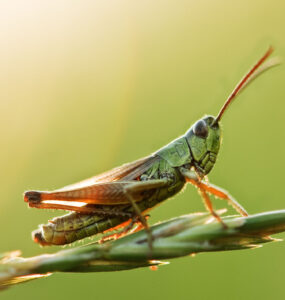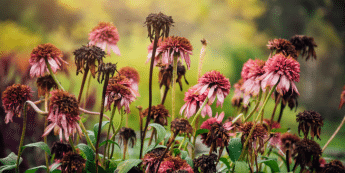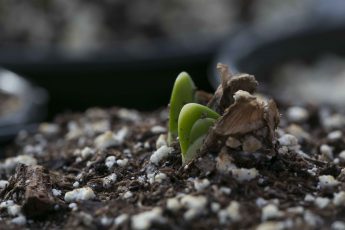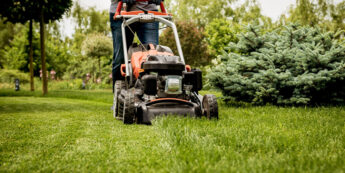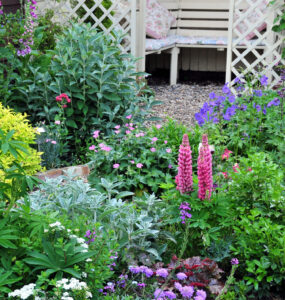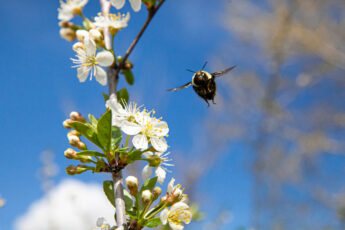Sod Webworm
by Rob Sproule
Does your lawn have brown patches that look like dog spots, only you don’t have a dog? Sod webworm is a common affliction in mature, exposed lawns (they don’t like shade). Luckily, the best way to control Sod webworm is also the best way to make your lawn healthier and greener.
Unlike most yard pests, Webworm is an American native and wasn’t introduced from the “Old World.” The adult brown mottled moths, recognizable by their unique snout, do no damage, but the eggs they lay can wreak havoc on turf.
How to Spot it
Got thatch? Webworms prefer mature, thinned out lawns with plenty of cozy thatch to curl up in and dig their tunnels through. The more thatch you have, the happier they’ll be.
Watch for brown spots from late June on. Webworms will often have several generations a year, so while the worms only chow down for a few weeks, repeated generations will make it look like they gorge for months.
Look for silken lined tunnels in the thatch, typically occurring in the center of browning spots. Other than webbing, their tiny green excrement pellets are a give-away.
You won’t see the worms themselves, which are a light tanned colour with brown spots, as they’re nocturnal, unless you drive them out. Douse a browned area with a solution of 2 tablespoons dish soap to a gallon of hot water. Wait a few minutes and they’ll wriggle to the surface. If you only have a few patches, you can simply rake them up from there and be done with it.
What it Does
The larva will chew your grass blades off just above thatch level and pull them into their silken caves for edible bedding. The crown of the grass blade is typically below thatch level, so while they don’t kill the blade they will give it a nasty buzz-cut. However, if left untreated the accumulating chomping stress will often kill the lawn.
The damage will worsen during hot, dry summers. The scalped grass will stick be alive, but chewed off whenever it tries to grow. Brown patches will eventually connect with each other and, if uncontrolled, there will ultimately be more brown than green.
What to do About it
Improving your lawn’s overall health will go a long way in controlling webworm. Give it a spring and fall aeration with each followed by a good raking to pick up as much thatch as possible (elbow grease required).
After thatch detail, consider top-dressing a spotty lawn with fresh seed. Mix some seed into top soil, sprinkle it across thin patches and water well with a fine spray. Healthy, thick lawns are less appealing to webworms.
Fertilize your lawn at least twice a year and, if the weather, turns hot and dry, turn the hose on. The best water to water is weekly but well. Put an empty tuna can in the lawn and fill it once a week or more so that deep watering gets past the thatch and into the roots.
Webworm larva make juicy snacks for a variety of predators, from ants, spiders, and roving beetles to nematodes (which you can purchase at some large garden centers or online). A healthy backyard eco-system will go a long way to control their numbers.
Bacillus thuringiensis is a naturally occurring bacteria that loves nothing better than killing Sod Webworm. It’s sold commercially as BTK as and is a safe alternative. Insecticidal soap, either store bought or home-made, is another natural remedy that will kill the worms but not larger predators.
Chemicals are like drugs; once you start using them it’s very hard to stop. They will wipe out your entire eco-system, so when the next generation of webworms hatches there will be no predators and the damage will be much worse, and the temptation to reach for the chemicals will be that much greater.
–
Related Articles
Summer Lawn Care
Controlling Summer Pests in the Fall
Dew Worms




